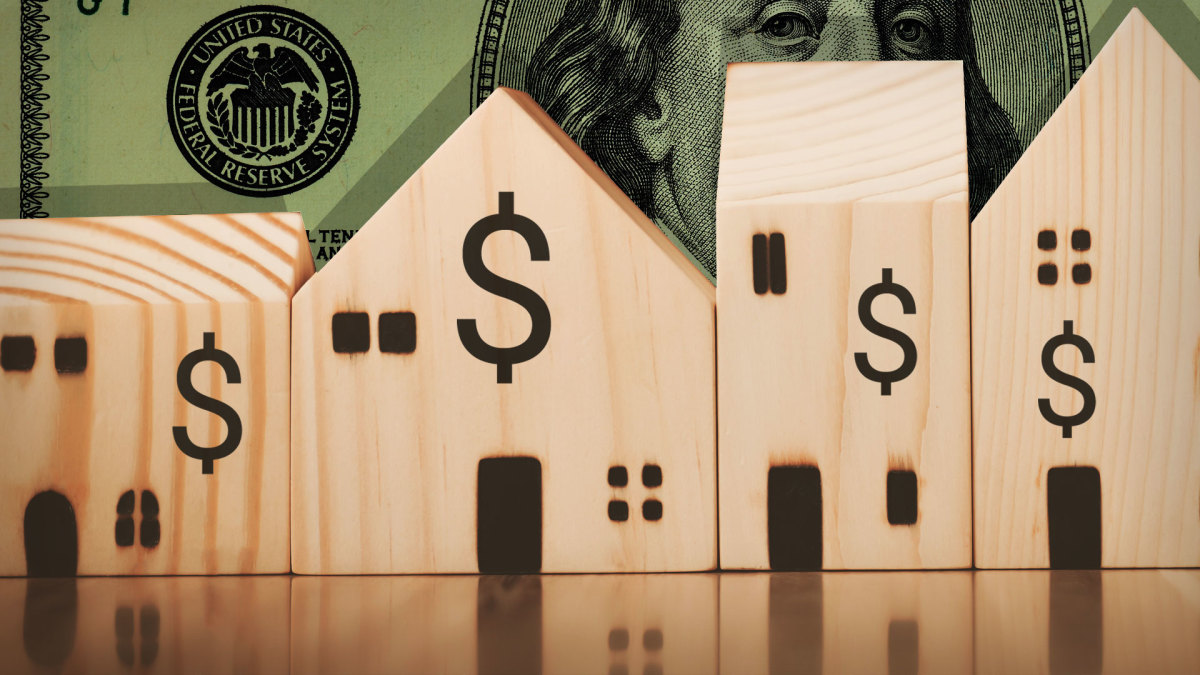
Many believed last year that interest rates would need to head much higher to wrestle runaway inflation lower, but even the most pessimistic probably didn’t see the sky-high lending rates consumers are paying this year coming.
One person who correctly predicted we would see mortgage rates soar is Real Money Pro analyst Bruce Kamich.
His forecast in September 2022 that 10-year Treasury yields could rise to 5%, leading to “mortgages at 8.00%” proved prescient. In October, the 10-year Treasury and mortgage rates both reached his 5% and 8% targets, causing home buying to stall.
Given Kamich’s accurate rate forecast last year, borrowers and investors may want to pay attention to what he thinks may happen to rates next.

Shutterstock/TS
The Fed’s war against inflation
The Federal Reserve has a dual mandate to enact policies that keep inflation and unemployment low.
It was doing well on both fronts until late 2021, when Covid-era easy money policies and a supply chain fiasco that crimped the availability of many items caused prices to skyrocket in 2022.
Related: 2 strategies for a lower mortgage rate that you probably haven’t thought of
Inflation got so bad that the central bank was forced to reverse years of easy-money policies that had kept interest and mortgage rates at multidecade lows. Since March 2022, the Federal Reserve has increased its Federal Funds Rate by 5.25%.
Higher rates have slowed economic activity, helping to wrestle inflation lower, but loan rates have surged.
Gross Domestic Product, or GDP, barely grew in the first half of 2023. As a result, the CPI Index, a common inflation measure, slowed to 3.2% year-over-year in October, down from a peak above 9% in June 2022.
However, the 10-year Treasury yield often used as a benchmark by banks to set lending rates has risen sharply higher on worry that sticky inflation will force the Fed to keep rates higher for longer.
As a result, the 10-year Treasury yield touched 5%, causing the 30-year mortgage rate to reach 8% in October, its highest level since 2000.
Charts suggest 10-year yields could do this next
Bruce Kamich has been analyzing markets using technical analysis for over 50 years, so he’s navigated both the runaway rates in the late 1970s and early 1980s and zero-interest rate policy, or ZIRP, which has kept rates low since the Great Recession in 2008.
It was his analysis of the 10-year Treasury Note yield chart that led to his conclusion that rates had broken a forty-year downtrend last year, leading him to correctly forecast a 5% 10-year Treasury yield and 8% mortgage rates.
More Real Estate:
- Elon Musk warns about a new housing crisis worldwide
- These affordable U.S. real estate markets are under the radar
- Dave Ramsey explains why now is a great time to buy a house
Now that those rates met his target, Kamich recently revisited his analysis for additional insight. The good news is that, at least for now, he thinks rates could make their way lower.
“In October we got a 'heads up' that a pullback was possible as the 12-day price momentum study made a lower high which yields made a higher high,” wrote Kamich. “The Moving Average Convergence Divergence (MACD) oscillator [a momentum indicator] crossed to the downside in early November and has since fallen below the zero line.”
The downside momentum may continue. Kamich used daily and weekly point-and-figure charts to calculate a 10-year yield target of 4.16% and 3.15%, respectively.
Since a lower 10-year Treasury yield will mean lower mortgage rates, his updated targets are likely welcome news for many who have been priced out of the housing market because of soaring mortgage rates.
Federal Reserve rate cuts could be coming
Point and figure charts can be used to calculate targets, but they don't provide a timeline. There's no telling if or when we might see a sub-4% 10-year yield, but Wall Street increasingly thinks that the Federal Reserve is about to embrace rate cuts.
Analysts at UBS said earlier this month it expects inflation to continue heading lower but slower economic activity will increase unemployment, causing the central bank to pivot from rate hikes to rate cuts.
They think that by the end of 2024, the Federal Funds Rate will be lowered by 2.75% to finish the year at 2.5%.
They're not alone. Bank of America recently detailed its expectations for 2024, including a prediction that the Fed will begin cutting rates by June.
If so, a friendly Fed could be the catalyst that gets the 10-year Treasury yield on a path down to Kamich's longer-term 3.15% target.
Sign up for Real Money Pro to get more insight from Kamich, including the stocks he thinks could be winners.







